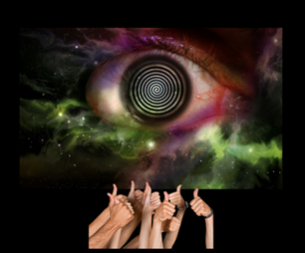Training in Hypnotherapy and EMDR: Which comes first?
Training in Hypnotherapy and EMDR: Which comes first?
Hypnotherapy and EMDR are both exceptionally effective and popular modalities that millions of therapists use. Any choice concerning the two of them is not a matter of “Which one is better?” or “Is one easier than the other to learn?” Therapists who have been trained in both hypnotherapy and EMDR will tell you that they both, depending on the client and on the circumstances and phases of therapy the client is in. The question isn’t whether it’s useful to learn both, because there’s no doubt you can benefit from getting these modalities in your toolbox.
Both hypnotherapy and EMDR offer clients the chance to open the conversation between their normal waking consciousness and the subconscious thought patterns that often influence them to indulge in unwanted behavior. Both modalities assist the client in reframing old and unproductive or destructive ways of thinking, and empower them with the freedom to choose new responses to old behavioral triggers.
Fortunately, high-quality training for both hypnotherapy and EMDR is available through the Wellness Institute. The question you should ask about these two modalities is, “Which one should I learn first?” Before answering that question, let’s look at the basic differences between hypnotherapy and EMDR.
How Do Hypnotherapy and EMDR Differ?
Hypnotherapy take somewhat different paths toward very similar goals. In hypnotherapy, the client is placed in a light trance state. After identifying a recent event that brought up the unwanted behavior, clients are invited to get in touch with the underlying emotions and express them openly. From there, they are guided through the process of age regression, to re-experience other life events where the source of the same or similar feelings might be
Clients then have the corrective experience of expressing the emotions that they had at the time, recognize the erroneous conclusions they made, and the behaviors that developed. After the age regressions, clients connect with those younger parts of themselves to provide the understanding, love, and healing that they need in order to move forward. The conscious mind becomes cognizant of unconscious needs, and resolution and integration occurs.
Hypnotherapy can be a deeply emotional experience for clients. It may take some of them time before they are willing to let go enough in order to surrender to the process.
EMDR also helps clients to make connections between the conscious and subconscious portions of the mind. This is accomplished through bilateral stimulation, either through eye movement, tapping motions, or lights. When both sides of the brain are stimulated, clients go into a state where they are ready to deal with target behaviors or incidents.
The therapist allows clients to go through the process, allowing memories to arise, and encouraging clients to go with them so that the memories can be processed by the cerebral cortex, and brought into normal waking consciousness. By bringing subconscious recollections to the surface, clients are able to make sense of them, and move forward in their therapy and in their lives.
Both hypnotherapy and EMDR allow clients to be resourced with ways of seeking refuge in states of consciousness that are comforting and relaxing. These are used by the therapist in the event the client becomes emotionally overwhelmed when confronted with unpleasant memories.
EMDR is a very simple procedure. Many clients like it because the approach is more matter of fact than hypnotherapy. Hypnotherapy is also simple, but it does expose clients to the very deepest of their emotions. The advantage to this is a full clearing of the emotional constructs through release and expression. In EMDR, emotional release is far less intense, and doesn’t always allow clients to fully release emotions on such a deep level. Different clients will be best suited for one modality or the other, and many benefit from using both. That’s why it’s essential for you to learn both of them.
Which Training Should You Choose First?
If you truly want to understand the concepts of both hypnotherapy and EMDR, the best approach would be to first enroll in the Six Day Hypnotherapy Training and Certification Program. In this program, you’ll get in-depth training about how tapping on the unconscious mind helps clients to make progress. You’ll learn simple hypnosis techniques, ways of helping clients eliminate habits through NLP, and how to empower clients with self-hypnosis. You will also have the experience of conducting hypnotherapy sessions, participating as a client, and observing sessions. Didactic material will illustrate how hypnotherapy is used to treat various client complaints, including codependency, addiction, sexual abuse, mind-body issues, eating disorders, and more.
Once you are certified as a Heart-Centered Hypnotherapist®, you will more fully understand what EMDR is able to do for your clients, and how you might use it in concert with hypnotherapy. With a fuller understanding of the importance of allowing clients to process old and upsetting memories, you will become a more fully informed and compassionate EMDR therapist. Our EMDR training is fully accredited by EMDRIA, and taught by an EMDRIA-endorsed instructor.
There is no question that EMDR and hypnotherapy are equally powerful tools, and of course, you’re free to choose in which order you take these two essential training programs. The Wellness Institute simply wants you to know that it’s easy and exciting to study at Wellness. Our online classes are presented in real time, with teachers available to answer your questions as you go through each moment of your training. Our courses also allow you, in most cases, to earn CEUs for the course hours you accrue when you study EMDR and Heart-Centered Hypnotherapy®
Classes are filling fast, so get your spot right away!









